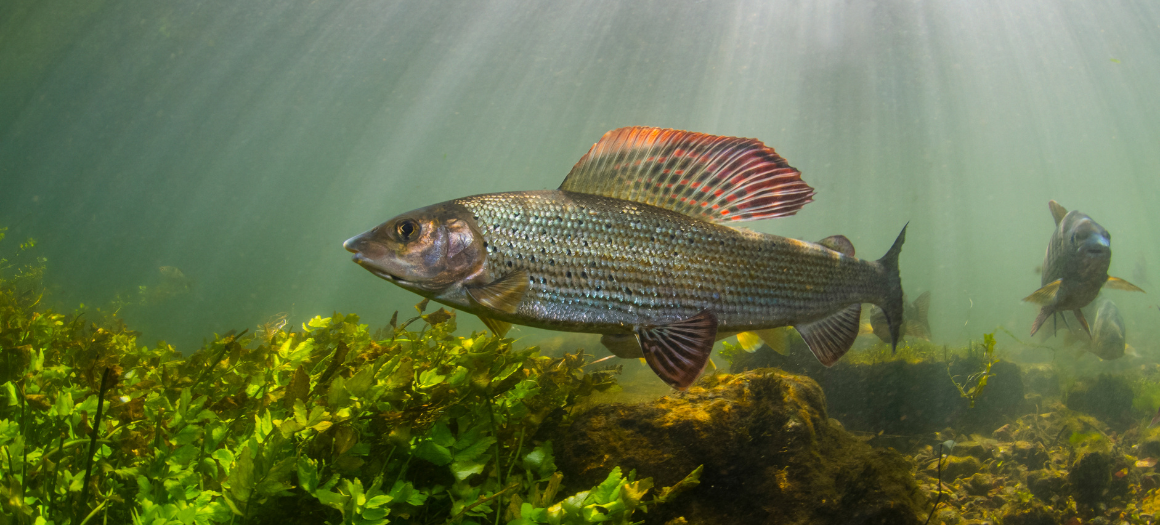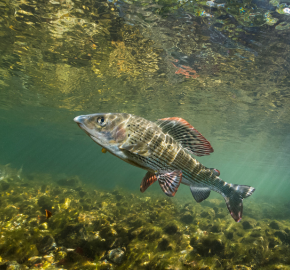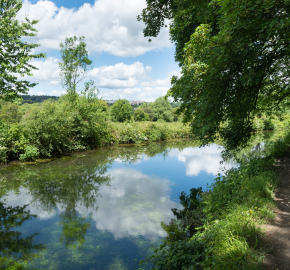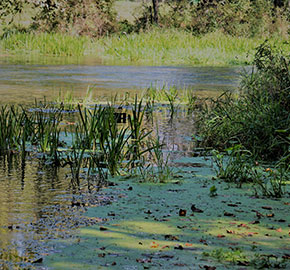Peers ride to the rescue of chalk streams?

In my new role at WildFish, one of the first items of interest to land on my desk was a claim that the Government has been “persuaded to give more protection to chalk streams”. This comes “after a long campaign (…) of lobbying headed by Angling Trust Ambassador Charles Rangeley-Wilson”.
The Government is reported as having “agreed to bring forward an amendment tabled by Lord Trenchard to provide the required protection for chalk streams which are currently under particular threat due to abstraction and pollution”.
Wow. What a result.
Of course, as lawyers, we like to delve a little deeper.
The Levelling Up Bill
This is all part of the Levelling Up Bill, which is going to bring in something called Environmental Outcomes Reports (known as EORs).
Bear with me here. Have a strong coffee…
These EORs are to be the new, post-Brexit replacement for the old European-derived system of environmental impact assessment (EIA for short). A system which has become a totem for planning bureaucracy, booed and hissed at by developers as a reason for them not meeting this or that house-building target or just building where they want.
Once the EORs replace EIA, if a developer wants to build something really big – a new factory, a new housing development, a home for your next 200,000 chickens – they will need to produce an EOR to persuade planners that all will be fine with the environment.
I took a closer look at the Trenchard amendment that the Government has agreed to bring forward “to provide the required protection for chalk streams”.
But wait! What’s this?
Hansard (the official record of all Parliamentary debate) confirms that the amendment was withdrawn and all the Government (in the guise of Lord Benyon) has agreed is to bring forward an amendment at Third Reading to provide clarity and reassurance regarding chalk streams in the context of EORs. Lord Benyon does “confirm that the Government intend to support the principle of the amendment”, but that isn’t quite that same as what is being reported.
Let’s be generous here and assume that the Government does do what Lord Trenchard, in withdrawing the amendment says he believes they will do, “that he [Lord Benyon] will table an amendment at Third Reading that is substantially the same as mine”.
What these potential changes could have meant for the Bill
Bearing in mind that the Government’s own version, to be introduced later, will be “substantially the same”, what would the amendment tabled by Lord Trenchard have done to the Bill?
The amendment would have changed the legal definition of “environmental protection”, which EORs will be required to address, adding item (e), so that it would then cover all of the following:
(a) protection of the natural environment, cultural heritage and the landscape from the effects of human activity;
(b) protection of people from the effects of human activity on the natural environment, cultural heritage and the landscape;
(c) maintenance, restoration or enhancement of the natural environment, cultural heritage or the landscape;
(d) monitoring, assessing, considering, advising or reporting on anything in paragraphs (a) to (c); and
(e) protection for chalk streams in England so as to reduce the harmful impacts of excessive abstraction and pollution and improve their physical habitat
Any lawyer would immediately see that this would have been a very weird amendment to what is otherwise a very broad and general definition of “environmental protection”.
Why single out chalk streams? What not wetlands? The Wildfowl and Wetlands Trust might have something to say about that, and they would be right.
What about peat bogs? Ancient woodlands? Moorlands?
On top of that, there is a very strong argument that part (c) of the definition “the maintenance, restoration or enhancement of the natural environment, cultural heritage or the landscape” covers chalk streams anyway.
Perhaps you think I am being churlish? It doesn’t matter why just chalk streams are singled out. At least they will be there in the definition, ‘on the face of the Act’. That’s got to be good, right?
To judge that, we need to look at what the practical effect of the change to the definition would mean.
The practical effect of a change to the legal definition of ‘environmental protection’
Elsewhere in the Bill, clause 143 (the “power to specify environmental outcomes”) will allow the Secretary of State to specify in later regulations the “outcomes” he wants in relation to “environmental protection” (the definition of which now includes chalk streams). These regulations will be made at a later date, well after the Bill has passed into law. So, we will have to wait for the detail.
My alarm bells start to ring here, because we all know Governments of all political persuasions are so often congratulated for delivering unexpectedly good news later down the line, don’t we?
What I suspect this boils down to is that if a proposed big new development might affect a chalk stream, a developer must take the potential impact into account in his proposals, including in his EOR. Doing so would allow the developer to persuade planners that he has avoided, or if he cannot avoid, has mitigated for, or if he cannot mitigate for, has elsewhere compensated for damage likely to be caused to a chalk stream by the development being proposed.
Developers must do that already under the existing EIA procedures. I suspect going straight to ‘compensation’ will be made easier under EORs than under EIA.
Perhaps it does help the case of chalk streams if they get an express mention written in law, but I am beginning to be unsure that the amendment really adds anything at all.
At best, the amendment might mean that a developer writing an EOR, say for new housing in Andover, would have to produce some general justification (by way of mitigation or just compensation) for any abstraction impact on the river being acceptable. But, they do that already under existing law anyway and will have to under that catch-all part (c) of the definition for EORs.
And, for me, here’s the crunch.
Chalk streams are now to be mentioned in law and there was a debate in the Lords. Added to which chalk stream protection gets cross-bench support in the Lords. But, for the avoidance of any doubt, the amendment will not necessarily prevent further damage to chalk streams from new developments.
Let’s be totally clear on what the amendment will not do
1. It will not alter how sewage pollution is dealt with at all. There is a right to connect to sewers and it will remain the responsibility of water companies to provide capacity through the Water Industry Act 1991 process (OFWAT and the AMP process).
2. The amendment will have no retrospective effect on any existing housing, roads, industrial sites sewage works, and any other developments. The amendment, and EORs generally, just relate to new developments.
3. It has no effect on existing agriculture or any new agricultural activity that falls below EOR thresholds (likely to be almost all agriculture, save new large intensive livestock units).
4. None of the existing abstraction licences sucking water from chalk streams will be reviewed as a result of the amendment. For new developments, I would fully expect any EOR to say that the Environment Agency abstraction licensing procedures will deal with abstraction pressures and the capacity of the river or catchment to cope.
It is a long-established principle that planning decisions (to which EORs will relate) should not duplicate or usurp decisions that are the remit of other regulatory systems, such as pollution control and the licensing of abstraction which are controlled by the Environment Agency.
What the amendment changes
What the amendment does seem to do is open the door more expressly to offers of compensation. I would expect developers to be offering to fund in-river modification, channel narrowing and the like (“to improve their physical habitat” is the wording in Lord Trenchard’s amendment) as part of some package, when other damage to chalk streams cannot be avoided and cannot be mitigated against.
That would certainly play along with the Government narrative that EIA was a block on development. Whereas the new EORs will facilitate development and help developers find alternative outcomes or alternative ways to deal with environmental harms that their development may cause.
Compensation is a difficult one. A developer paying for ‘good works’ elsewhere can look positive. But compensation can also look and feel like the right to develop is being purchased. It is a very thin line between the two.
We wait to see exactly what Lord Benyon’s wording looks like. At best, this is a win in that the Government now knows that chalk streams are important. But didn’t they know that already?
I cannot find it in my cynical old bones to be as chipper as those NGOs who assert that the Government has been “persuaded to give more protection to chalk streams”.
On what I have seen so far, I don’t think they have yet done anything of the sort.




